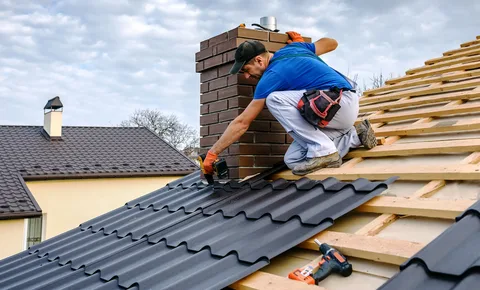Replacing a roof is a significant investment in your home, one that not only enhances its appearance but also its functionality and value. This comprehensive guide aims to empower you with knowledge, ensuring your roof replacement journey is both successful and satisfying.
Understanding the Need for Roof Replacement
Identifying the Signs: Roof replacement becomes necessary when repairs are no longer sufficient. Look for signs like missing shingles, leaks, sagging, or light coming through the roof boards. If your roof is over 20 years old, it’s wise to consider an inspection.
Impact on Home Value: A new roof can significantly boost your home’s market value. It’s a key selling point, showcasing your commitment to maintaining the property.
Choosing the Right Materials
Options Available: Roofing materials vary from traditional asphalt shingles to metal, slate, and wood. Each has its unique advantages regarding durability, appearance, and cost.
Energy Efficiency: Modern roofing materials can enhance your home’s energy efficiency. For instance, certain shingles reflect solar heat, reducing cooling costs in summer.
The Replacement Process
Initial Inspection: A professional inspection is crucial. It identifies underlying issues and helps in planning the replacement accurately.
Removal of Old Roofing: This involves stripping away the old shingles, inspecting the roof deck, and making necessary repairs.
Installation: Professional roofers will install the new roof, ensuring every aspect meets industry standards for safety and durability.
Cost Considerations
Budgeting: The cost of roof replacement varies based on materials and labor. Research and compare quotes from different contractors.
Return on Investment: While the upfront cost can be high, the long-term benefits like improved energy efficiency, reduced maintenance costs, and increased property value make it a worthwhile investment.
Choosing the Right Contractor
Credentials and Experience: Hire a licensed, insured, and experienced contractor. Check their references and previous work to ensure quality.
Warranty and After-Service: Ensure you understand the warranty offered on both materials and labor. Good after-service is essential for future maintenance needs.
Maintenance and Care
Regular Inspections: Regular inspections help identify potential issues early, prolonging the life of your roof.
Cleaning and Repair: Keep the roof clean from debris, and address minor repairs promptly to avoid major issues.
Frequently Asked Questions
How long does roof replacement take? Typically, a few days, depending on the size of your roof and weather conditions.
Can I stay in my home during replacement? Yes, in most cases, you can stay at home, though there might be some noise and disturbance.
Is roof replacement better than repair? If your roof is old or extensively damaged, replacement is often more cost-effective in the long run.
Conclusion
Roof replacement is a substantial but essential investment for maintaining the safety, efficiency, and value of your home. With the right approach, materials, and professional assistance, you can ensure a smooth and successful roof replacement experience.


